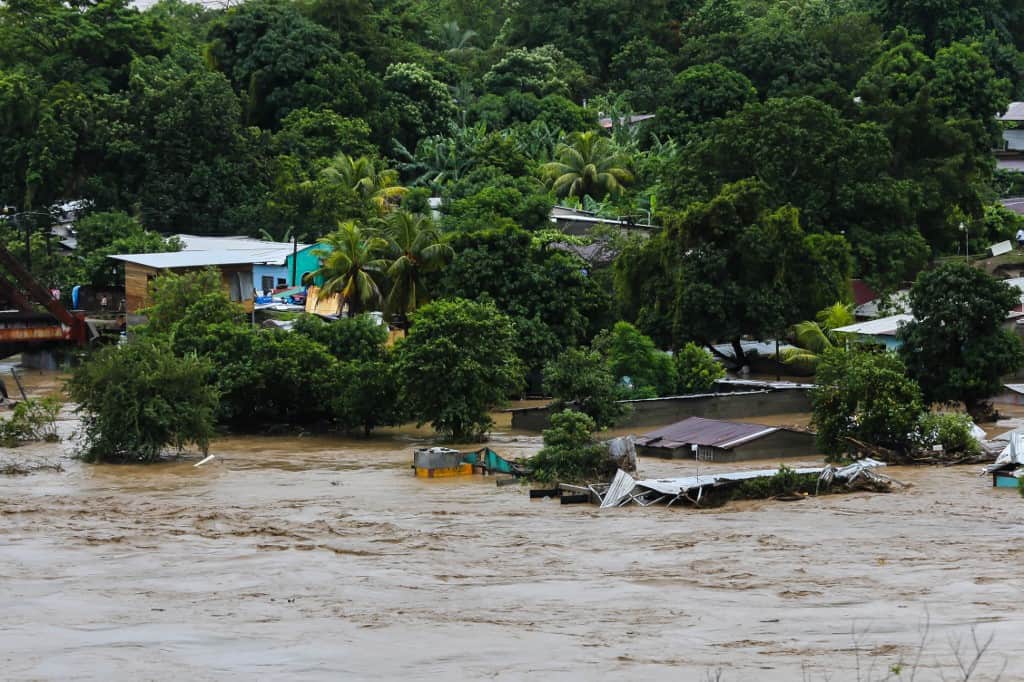Central American countries began to see an improvement in the weather on Wednesday after suffering the violent impact of cyclone Iota, which dissipated over El Salvador after leaving at least 14 dead, flooded towns and damage to road infrastructure.
Nicaraguan authorities on Wednesday reported the death of four people, including three children, due to a landslide in the northern department of Matagalpa, bringing the number of deaths from the cyclone to 14.
Ten of the deaths occurred in Nicaragua, two in the Colombian archipelago of San Andrés, Providencia and Santa Catalina, one in Panama and one in El Salvador.
Since it made landfall on Monday in Nicaragua’s North Caribbean as a category 5 hurricane — the maximum on the Saffir-Simpson scale — Iota, the second cyclone of the month after Eta, flooded homes and large areas of crops, downed trees, left dozens of towns cut off and damaged roads.
After weakening to a tropical storm, its “associated moisture remnants” are located 35 km west-northwest of San Salvador, the Environment Ministry of that country reported.
In San Salvador, although the danger of rains remains, Presidential Commissioner Carolina Recinos stressed that “prevention work,” with timely evacuations, helped the country avoid more deaths.
From high-risk areas, 880 people were evacuated to 230 shelters distributed throughout El Salvador.
Evaluating devastated areas
On Wednesday, rains persisted in the northern region of Nicaragua, where its main city, Bilwi, began to assess the damage caused by Iota.
The political secretary of the government of the North Caribbean of Nicaragua, Yamil Zapata, affirmed that the cyclone demolished much of the infrastructure in the city of more than 40,000 inhabitants.
“Leaving Eta to fall in Iota. What Eta had left standing, this hurricane came and delivered a final blow,” Zapata said.
The official assured that there is abundant damage to homes, electricity and water services, while the Bilwi dock was totally destroyed.
“The damage is really significant,” Zapata told official media.
As of Wednesday, Bilwi was still without electricity, but cell service was restored Tuesday.
Its inhabitants began to clean up the rubble and try to restore the roofs of their houses with what they could, while the streets of the city are being cleared of debris.
Relief in Honduras
Honduras suffered floods, but the omens of death and further destruction were not fulfilled, with less-than-expected rainfall after the eye of the storm crossed swiftly through the south of the country.
Tegucigalpa was spared more rains, but the growth of rivers caused alarm in the capital of one million inhabitants, where police and military evicted tens of thousands of people from the hills.
The main floods observed Wednesday were in the northern cities of La Lima, El Progreso and other communities of the productive Sula Valley, in the vicinity of San Pedro Sula — the second city in the country, already punished by Eta.
The heavy rains also impacted Guatemala with the overflowing of rivers and the fall of trees on roads, among other incidents, without causing victims, according to the authorities.
Calls to address climate change
The double impact of the powerful storms prompted calls to address the effects of climate change and requests for international aid.
“Iota and Eta are part of the climate change blow to Central America that in a few days have left mourning and destruction,” Mauricio Sermeño, coordinator of the Salvadoran Ecological Unit, told AFP.
The ecologist warned that the impact of meteorological phenomena “cannot be mitigated with few resources,” so he called on the international community to help Central America.
The presidents of Honduras, Nicaragua, Guatemala and Costa Rica asked this week for resources from the financial community and international organizations.
“The lesson that Iota and Eta leave is that governments have to alleviate the poverty that makes millions of people vulnerable because, lacking resources, they build houses in vulnerable areas,” Sermeño summarized.
With a little more than 520,000 km2 and 50 million inhabitants, Central America is a target of hurricanes that form in the Caribbean, but it is also vulnerable to the eruption of some 30 active volcanoes and constant earthquakes as it is part of the Ring of Fire of the Pacific Ocean.







